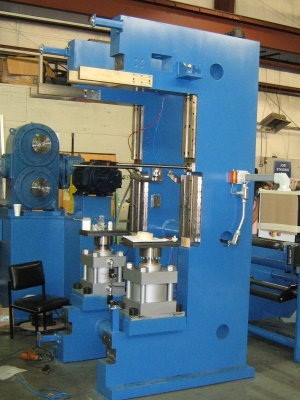The design of industrial machinery is the starting point for building machines. And before the design, some assessments are made to take into account to guide that design. Although each type of machine must have unique characteristics, there are some general guidelines about the process that must be learned and applied.
Industrial machinery design: what you are looking for
There are some main characteristics that must be taken into account when carrying out a new design. The validity and viability of this will depend on this, namely:
- It must be functional. meet your proposed need and customer expectations
- It should not pose a risk. That is, it must be safe. Hazard should be eliminated when it can and minimized when not. Also include means for
- protection as well as appropriate measures and instructions for their use.
- It seeks to trust the reliability of the machine. This means that you should not fail for a stipulated time and at a certain level of confidence.
- It must be useful. The potential customer must want it, and the machine must be “user friendly”.
- Competitive. At the market level it must be attractive. This is achieved with a formula of quality and price to match.
- Its manufacture must be as correct and fast as possible. If possible, it is requested that the design be suitable for the serial production of the machine. This in turn influences the competitiveness characteristic.
- It can be marketed. Both the design and the control and repair service must be able to be sold to create a flow of money and jobs in the industrial market.
Industrial machinery design: what to consider
There are many final properties of machinery to consider in the creation process. Between them:
- Resistance to: stresses, distortion, deflection, rigidity, wear, corrosion, friction …
- Security for the user. The security section is very important. Machines should be designed as safe as possible. Despite that, there are always risks when using industrial machinery.
- Cost. The lowest cost must be sought for the best materials. In other words, a balance must be found between quality and price.
- Weight. Industrial machinery is heavy, but you always have to try to reduce it for transport reasons.
- Life. In relation to the resistance that is sought, it should also be sought that a machine has the longest possible useful life.
- Noise. One of the most used protections in the industry are helmets or headphones. The less noise, the less damage will be to the operator.
- Other properties: Shape, size, control, maintenance, legal responsibility, and recycling.
Methodology to follow for the design of industrial machinery
The steps to follow, to get a mechanical product, are the following:
- Initial approach to the project. It must be decided why the machinery is to be made.
- Search, selection and analysis of information. It is necessary to carry out a previous documentation of everything that the design entails.
- Creativity and selection of design alternatives. Brainstorming meetings will be held.
- Design development and its alternatives. Synthesis and 2D analysis will be done first. Then feedback and improvements and finally 3D synthesis and analysis.
- Realization of prototypes.
- Product optimization and realization.
HOW IMPORTANT IS DESIGN IN PRECISION MACHINING?
Before carrying out any process to manufacture precision machining, a design is necessary, which will serve as a guide to make any part. The design draws and creates objects, constructions and parts that allow machining to follow clear instructions and to be molded in a certain and precise way.
Architecture, engineering, industrial design, graphic design, plastic arts or 3D animation also require a design prior to the machining process, so that the robot can correctly interpret the guidelines and mold the parts, to build the machining precision.
To achieve the best results in precision machining, a prior design is required, in addition to helping to achieve considerable cost savings, since a safer and more specific process is carried out, reducing the possibility of making mistakes or throwing out lose material. Modeling and layout will be key to the final design during the machining process.
WHAT TOOLS ARE USED?
For the design of precision machining, specific tools such as CAD are used, a tool that ranges from geometric modeling to custom-made applications, to analyze or optimize the product through the calculation of physical properties such as mass, volume, moments … modeling and analysis of tolerances or finite elements, assembly … The main objective of this tool is to define the geometry of the design, to achieve a unique and precise piece.
CAM is another of the tools used to design machining, in this case it is computer-aided manufacturing. A tool that defines computer-aided manufacturing to control CNC machinery, such as a lathe or a milling machine, in the creation of manufactured parts such as a tube profile, prototypes or a metal plate, for example.
It is a software that serves as a bridge between CAD technology (which deals with 2D and 3D technology) and the programming language of machines, to create the designed parts. Ultimately, CAM uses models created in CAD software to create machine-driven toolpaths, turning virtual blueprint designs into physical parts.
Stalwart International, One of the best chemical process equipment manufacturer companies in India.
